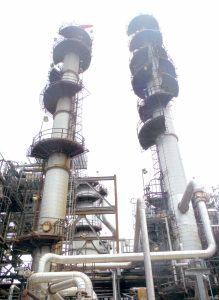
US nitrogen capacity
New carbon capture-based plants could see US nitrogen capacity jump over the next few years, but Trump attacks on IRA tax credits may scupper some ongoing projects.

New carbon capture-based plants could see US nitrogen capacity jump over the next few years, but Trump attacks on IRA tax credits may scupper some ongoing projects.

India’s push to replace its sizeable urea imports with home grown capacity continues, but may not keep pace with rising domestic demand.

Support for ammonia prices in markets east of Suez eroded during February. The ongoing bubble of support seen in NW Europe remained just about intact, though news of further declines at Tampa for March and slumping natural-gas prices should begin to eat away at any remaining support in the West. After declining $70/t during the first two months of 2025, the Tampa settlement between Yara and Mosaic was revised down a further $40/t for March, imposing further downward pressure on f.o.b. values in Trinidad and the US Gulf.

Toyo Engineering Corporation (TEC) will license its ACES-21 urea technology to Angolan fertilizer producer Amufert for the Soyo urea plant in Angola. The plant will have a capacity of 4,000 t/d and will be the first of its kind in the country, based on abundant local natural gas supplies. Toyo Engineering will supply licensing, basic design, certain equipment procurement and technical services, while international engineering company Wuhuan Engineering will lead the engineering, procurement and construction of the plant. Production is expected to start in 2027. KBR was previously awarded the license for the 2,300 t/d ammonia plant in November 2024 (see Nitrogen+Syngas 393, Jan/Feb 2025, p6).

Carbon Recycling International (CRI), which operates a geothermally powered green methanol plant at Svartsengi, 40km southwest of Reykjavik, had to evacuate its site in late November when a 3km fissure opened in the earth a few kilometres away and lava began spilling across adjacent land. Satellite photos of the area taken on November 24 show a large field of molten and cooled lava to the north, west, and south of Svartsengi, though the plant itself remained undamaged. CRI’s Iceland facility runs on CO2 , water, and renewable electricity from the Svartsengi geothermal power station. CRI says the low-carbon energy source allows it to produce 4,000 t/a of methanol with a greenhouse gas footprint just 10–20% that of conventional methanol.

Ammonia benchmarks west of Suez remain supported by limited availability at key regional export hubs amid increased potential for cargoes to arrive from the East, where availability is far healthier, and prices appear under pressure. The disparity in prices was illustrated towards the end of August, when Nutrien sold 25,000 tonnes to multiple buyers in NW Europe for 1H September delivery at $550-555/t c.fr. When netted back to Trinidad, the price marks a sizeable premium on the $375/t f.o.b. last achieved by Nutrien back in late June, although given that last business in Algeria was fixed at $520/t f.o.b., it appears there is room for delivered sales into Europe to move up further. Regional availability is still limited, with extreme weather conditions in the US Gulf and North Africa potentially impacting supply further over the coming weeks.
Join us at the CRU Sulphur + Sulphuric Acid 2024 Conference and Exhibition in Barcelona, 4-6 November, for a global gathering of the sulphur and sulphuric acid community. Meet leading market and technology experts and producers, network, share knowledge, and learn about market trends and the latest developments in operations, process technology and equipment.

Refinery sour water strippers are an often overlooked resource of low GWP ammonia. Martin A. Taylor and Charles L. Kimtantas of Bechtel Energy Technologies and Solutions, Inc. (BETS) show the results of a study on reusing an existing SWS as one of the major systems in a SWSPlus unit for the recovery of ammonia for sale. Relative cost factors will compare a complete SWSPlus unit versus reusing an existing SWS.